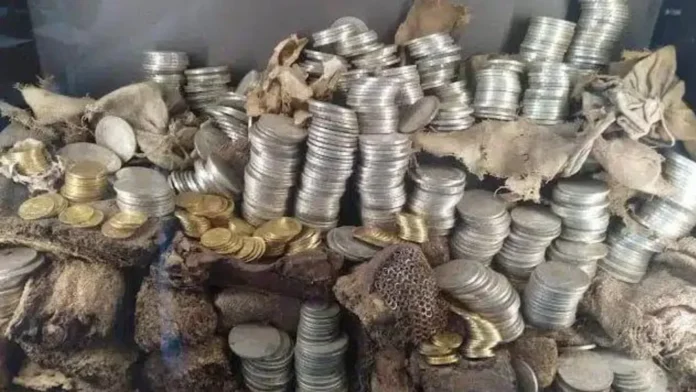
France is reeling from a series of audacious museum heists that have shaken public confidence in the nation’s ability to safeguard its cultural treasures. Just hours after the dramatic theft of French crown jewels from the Louvre, thieves struck again — this time at a museum dedicated to philosopher Denis Diderot in Landres, north-eastern France.
The burglary at the Maison des Lumières (House of Enlightenment) took place on Sunday night, when intruders made off with around 2,000 gold and silver coins valued at approximately €90,000 (£78,000; $104,000).
When staff opened the museum on Tuesday morning, they found a smashed display case and immediately alerted authorities.
According to officials, the stolen coins were selected with “great expertise.” Dating from between 1790 and 1840, the collection had been part of the city’s private holdings since 2011, when it was unearthed during building renovations.
The theft has deepened alarm over a disturbing trend. In recent months, France has witnessed a surge in cultural crimes targeting museums and heritage institutions. Last month, thieves broke into Paris’s Natural History Museum, escaping with six gold nuggets worth an estimated €1.5 million.
A Chinese national was later arrested in Barcelona while allegedly attempting to sell melted-down gold connected to the theft.
In September, criminals looted two Chinese porcelain dishes and a vase worth a combined €6.55 million from the National Porcelain Museum in Limoges. Despite their high value, experts say such pieces are nearly impossible to sell on the legitimate art market due to meticulous cataloguing and traceability.
But it was the Louvre heist that captured global headlines. Disguised as maintenance workers, a gang used power tools and a mechanical ladder to infiltrate the museum’s Gallery of Apollo in broad daylight, stealing jewels valued at €88 million.
Among the stolen items were a diamond-and-emerald necklace gifted by Napoleon to his wife, a tiara once worn by Empress Eugénie, and pieces belonging to Queen Marie-Amélie.
The incident has ignited a national debate over museum security. Louvre Director Laurence des Cars admitted before French senators that the museum’s perimeter CCTV was “aging” and poorly positioned — with the only exterior camera near the entry point turned away from the balcony used by thieves. “We failed these jewels,” she conceded.
A preliminary investigation revealed that one in three rooms at the Louvre lacked CCTV coverage, while its alarm system failed to activate during the robbery. Justice Minister Gérald Darmanin described the security lapses as “a terrible image for France,” noting that the thieves’ ability to drive a modified truck up to the building underscored systemic failings.
Experts warn the string of thefts could trigger a wave of copycat crimes across Europe. “If someone can target the Louvre and escape with the crown jewels, local thieves may think, ‘Let’s try our nearest museum,’” said art detective Arthur Brand.
As investigations continue, the French government faces mounting pressure to modernize museum security before more of its cultural legacy vanishes into the shadow.